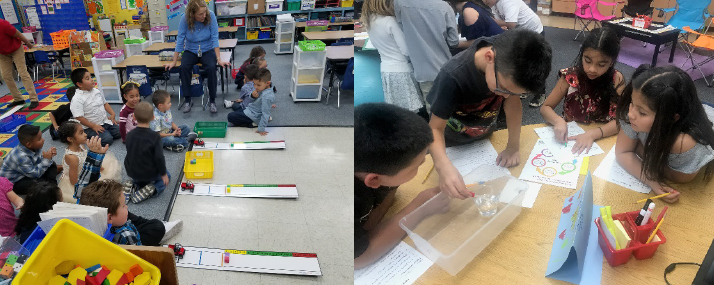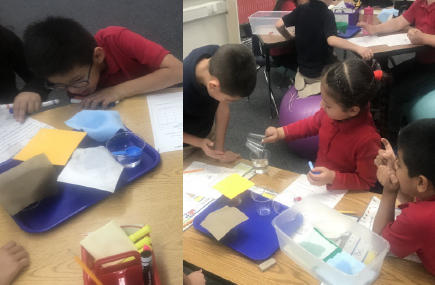K-5 STEM Grant Puts Engineering in the Classroom
Empire Elementary made a commitment to put more STEM in its classrooms as a part of its implementation of the Next Generation Science Standards. Empire’s teachers found that they needed more engineering in their curriculum and applied for a K-5 STEM Grant to fill the gap and help teachers focus on the engineering design process with their chosen program - STEM in Action - one of the Nevada STEM Advisory Council’s recommended STEM programs.
Adrienne Wiggins, Empire’s STEM Coach, likes that STEM in Action gives her teachers everything they need to do a successful STEM lesson.
“The kits,” she explains, “have helped teachers see what STEM looks like as well as the effect STEM has on the learning in their classroom. One of my teachers was very excited to use the STEM in Action kit, stating, ‘This is not one more thing, but a way to enhance what I am already doing!’ That is the goal, to help teachers see that we can incorporate STEM as a way to enhance what we are already doing. In doing so, we can give our students a quality education that prepares them for the jobs of the future.”
Teachers have already noticed that science has been more engaging and hands-on, and that learning is sticking with students because the lessons are more meaningful.
Research finds that early exposure to STEM, especially for girls, makes children more likely to succeed in science and pursue STEM fields in college. OSIT awarded K-5 STEM Grants to innovative applications that increase the use of evidence-based, hands-on, experiential STEM learning in grades K-5.

Image on left: Kindergartners were working on forces and motion (more specifically pushes and pulls). Students were investigating what happens when an object was given more force as well as how to make an object change speed or direction. Students then had to work as a team to stop the truck safely in the green safety zone. As a team they had to make a plan, create a model, test their model, and improve their design.
Image on right: Second Graders were investigating the properties of matter in order to design a mat for a wet dog that would absorb the water and not slip on the floor.

Image on left: Second Graders investigated how materials absorb water.
Image on right: They then planned and conducted an investigation. They had to make a plan, create a model, test their model, and improve their design.